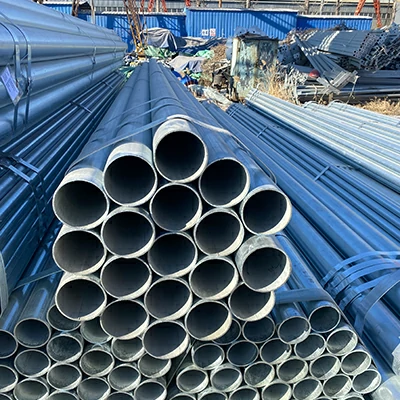Surface preparation is crucial for achieving a durable and long-lasting paint finish on galvanized steel pipes.
Here are the typical surface preparation requirements for painting galvanized steel pipes:
- Cleaning: Remove any dirt, grease, oil, or other contaminants from the surface of the galvanized steel pipe. Clean the surface thoroughly using a solvent-based cleaner or detergent solution. Rinse the surface with clean water and allow it to dry completely before proceeding.
- Degreasing: If the galvanized steel surface is oily or greasy, degrease it using a solvent or alkaline cleaner. Ensure that all traces of oil and grease are completely removed to promote proper adhesion of the paint.
- Abrasive Blasting: Abrasive blasting, also known as sandblasting, is often recommended to roughen the surface of the galvanized steel and improve paint adhesion. Use abrasive media such as aluminum oxide or garnet to remove any zinc oxide or other contaminants from the surface. Ensure that the surface is evenly blasted to achieve a uniform profile.
- Etching: After abrasive blasting, etch the surface of the galvanized steel using an etching solution or phosphoric acid. This helps to promote chemical bonding between the paint and the steel substrate, enhancing adhesion and durability of the paint finish.
- Rinsing and Drying: After surface preparation, thoroughly rinse the galvanized steel surface with clean water to remove any residual etching solution or abrasive media. Allow the surface to dry completely before applying the primer or paint. China Galvanized steel pipe factory Ensure that the surface is completely dry to prevent adhesion issues and premature paint failure.
- Priming: Apply a suitable primer specifically designed for galvanized steel surfaces. The primer helps to seal the surface, improve adhesion, and provide corrosion resistance. Use a brush, roller, or spray gun to apply the primer evenly over the entire surface of the galvanized steel pipe. Allow the primer to dry according to the manufacturer’s instructions before applying the topcoat.
- Painting: After priming, apply the desired topcoat paint to the galvanized steel pipe. Choose a high-quality paint suitable for exterior or interior use, depending on the application requirements. Apply the paint in thin, even coats using a brush, roller, or spray gun. Allow each coat to dry thoroughly before applying additional coats as needed.
- Curing: After painting, allow the paint to cure fully according to the manufacturer’s instructions. Ensure that the painted surface is protected from moisture, dust, and other contaminants during the curing process to prevent defects or imperfections in the paint finish.
By following these surface preparation requirements, you can achieve a durable and professional paint finish on galvanized steel pipes, ensuring long-lasting protection and aesthetic appeal in various applications.
